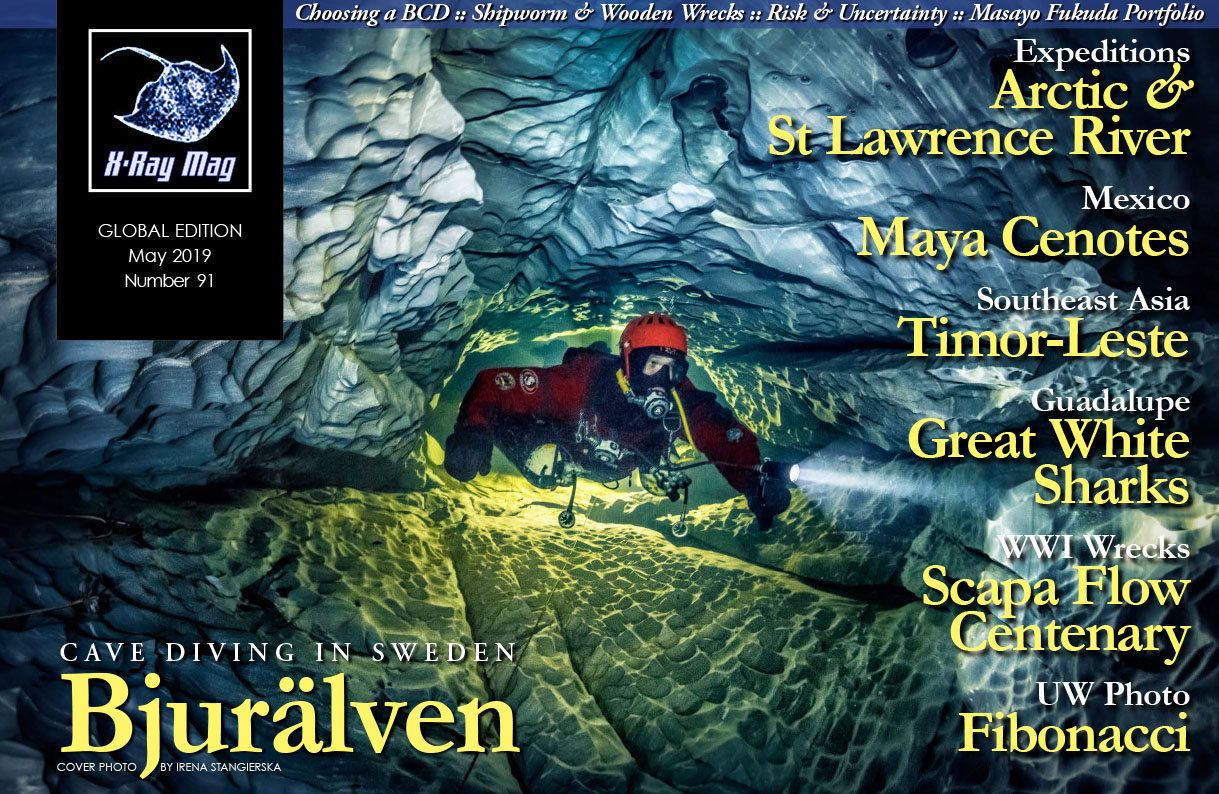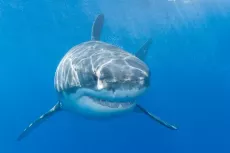
Maya Cenotes: Light, Shapes & Reflections
A huge ramified system of freshwater-filled sinkholes in the Yucatán Peninsula of Mexico comprise what is known as the Maya Cenotes. The ancient Maya people sometimes used them for sacred offerings and sacrifices. The term “cenot” comes from the language of the Maya, who called these sinkholes “ts’onot” or “dzonot,” which means “sacred well” or “something very deep and terrible.” The Maya also called the sinkholes “gates into the kingdom of the dead” or “gods’ lips.”
Contributed by
Factfile
Andrey Gorodissky is an award-winning underwater photographer, technical diver and practicing attorney based in Moscow.
Over the past 19 years, he has traveled the world's oceans to photograph the underwater realm and its inhabitants, featured in several solo exhibitions.
Visit: andreygorodissky.ru.
SOURCES:
Wikipedia.org
Divecenotesmexico.com
This huge karst system of underground caves and rivers has a combined length of about 350km and consists of around 7,000 cenotes. The cenotes were formed more than 200 million years ago by the dissolving of limestone into sinkholes, which then filled with underground waters. Scientists usually connect the formation of this system with the regular influence of natural forces. However, there is another theory that says this system was formed by the impact of a giant meteorite 65 million years ago.
I first visited Yucatán to dive its cenotes in 2005. Since then, I have returned five more times and cannot stop dreaming of going back for another photo session in the cenotes, because I know of no more surrealistic and fantastic place on earth than this one.
Light Curtain and The Pit. Stalactites and stalagmites of incredible shapes and sizes formed millions years ago in these cenotes, when the caves were still dry. The fascinating “laser show” of the light in these cenotes is generated by sunbeams refracting in the water. Vast caverns with unearthly scenery and crystal clear water gives divers the illusion that they are “flying” in a gravity-free environment on another planet.
Dreamgate. A mirror-world reflects off the black surface of the water under the roof of this cave, which absorbs all the light from dive torches and reflects only the stalactite forms that seem to be hanging in a black cosmic space—I call this the “black mirror” effect. In Dreamgate, located 2km south of Xel-Ha, the underwater photographer experiences an interesting optical illusion. Stalactites hang vertically from the roof of the cave with their reflections in the “black mirror” most certainly at 90 degrees on the water’s surface under the cave’s roof; however, the stalactites with their reflections look uncannily like cosmic objects hanging in the emptiness of space.
Zapote. The Cenote Zapote in Puerto Morelos—or “Hell Bells,” as it is called by divers the world over—must be one of the most unique places on earth, as it has stalactites that have formed into the shape of bells. Some of them have grown up to two meters in size. It is still not clear how or why the stalactites are shaped like bells. Scientists continue to discuss the issue.
This place is rather difficult to dive, since there is not a single photon of natural light inside the cave, and any photo session here has to be conducted at depths of 25 to 35m. Unfortunately, it is unrealistic to dive deeper because of thick sulfur clouds. For any underwater photographer spending extra time taking photos at this depth, it is worthwhile to bring an additional tank of nitrox with you, or placing the tank of nitrox 6m under the surface of the cave entrance for your use on your return.
To capture the bells, I decided to take panoramic images. This was a tremendously difficult job, since I had to make seven consecutive shots, which could be compiled into one larger image later in post-production, i.e. the images had to be taken strictly on one plane in order for this to work. This meant that my buoyancy had to be absolutely neutral. It was an exciting exercise to do in complete darkness, with the ever-bouncing rays of dive torches and light strobes dancing about, and no frame of reference or objects in the pitch black cave with which to orientation oneself.
In the Maya cenotes, I use a Sony A7rII camera in a Nauticam housing, with Subtronic strobes and five powerful dive torches for permanent light. ■



















































